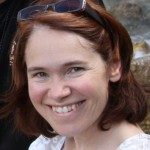Link to Pubmed [PMID] – 9066106
FEMS Microbiol. Lett. 1997 Mar;148(1):27-34
Sets of primers specific for both pathogenic (SPL) and saprophytic (SSL) Leptospira were designed from ribosomal 16S genes (rrs) available in databases. They were used as two sets of primer pairs for the PCR amplification of known pathogenic and saprophytic strains. It was possible to identify pathogenic strains by the use of SPL primers and saprophytic ones by SSL primers. Serovars from L. meyeri, of controversial pathogenicity status, confirmed the heterogeneity of the species representatives in this respect. Serovars ranarum, sofia and perameles were amplified by SPL and not SSL. Conversely, serovar semaranga was amplified by SSL and not SPL. In order to use SPL primers for the detection of pathogenic leptospires from a natural water environment, we set up an additional semi-nested PCR by employing a second internal primer which succeeded in detecting as few as 5 pathogenic leptospires per ml of water.
